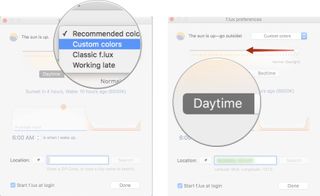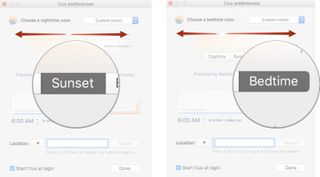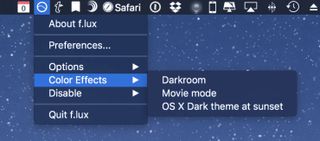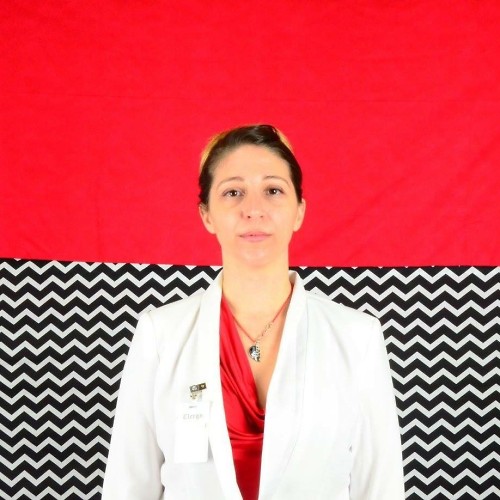
With macOS 10.12.4, Apple added Night Shift, which warms the color of your screen after sunset and before sunrise. Unfortunately, it isn't available on older devices, including MacBooks older than early 2015.
f.lux is an app that offers Night Shift-style brightness and hue adjustments depending on the time of day. It's been a great tool for years on the Mac — and might just have been the inspiration for Night Shift. It works with older Macs, and even Macs running older operating systems, like El Capitan and Yosemite.
If you're itching for a Night Shift-style option for your older Mac, you can download and customize f.lux right now! Here's how.
- How to download and install f.lux on your Mac
- How to adjust the color changes in f.lux on your Mac
- How to customize how f.lux works on your Mac
- How to temporarily disable f.lux on your Mac
How to download and install f.lux on your Mac
Unfortunately, f.lux is not available in the Mac app store, so you'll have to perform a few additional steps to download it onto your Mac.
- Navigate to justgetflux and click the Download f.lux button. A .zip file will download to your computer.
- Open your Downloads folder (or the folder you designate downloads to automatically direct to).

- Double-click Flux.zip to unzip it.
- Double-click the Flux file to open it.

- Click Open when asked if you are sure you want to open "Flux."
- Click Move to Applications Folder when prompted. This will automatically move the application to its appropriate location so you don't have to do so manually.

- Click Allow when f.lux requests to use your current location. This is necessary because the app changes brightness and color based on when the sun rises and sets in your area.
Note: You can manually enter a location instead of sharing your location with f.lux in the Preferences section.
How to adjust the color changes in f.lux on your Mac
f.lux has a default color range for Daytime, Sunset, and Bedtime. When you first start using f.lux, you may find the color changes at Sunset and Bedtime jarring. If the recommended colors don't work for you, you can customize the effect for each time of the day. You can also preset the effects for "Working Late," which will keep the screen bright for 14 hours and then skip right to the Bedtime settings.
- Click the f.lux icon in your Menu bar (in the upper right of your Mac's screen). It looks like a circle with a squiggly line through it.
- Click Preferences.

- Click Custom colors.
- Click Daytime.
- Drag the color effects slider to the left to change the brightness and hue of your screen.You can reduce or increase the amount of the effect from the time you wake up until sunset.

- Click Sunset.
- Drag the color effects slider to the left or right to change the brightness and hue of your screen.You can reduce or increase the amount of the effect from sunset until bedtime.
- Click Bedtime.
- Drag the color effects slider to the left or right to change the brightness and hue of your screen.You can reduce or increase the amount of the effect from bedtime until you wake up the next morning.

"Classic f.lux" is a less pronounced default setting and works best on smaller screens, like the 13-inch MacBook.
Master your iPhone in minutes
iMore offers spot-on advice and guidance from our team of experts, with decades of Apple device experience to lean on. Learn more with iMore!
How to customize how f.lux works on your Mac
f.lux has some useful features to help you get the most out of its effects. These options make it possible for you to customize your personal experience.
- Click the f.lux icon in your Menu bar (in the upper right of your Mac's screen). It looks like a circle with a squiggly line through it.
- Hover over Options to see what options you have.
- Click an Option to enable it.An explanation of what Options do from f.lux's website:


- Fast transitions: 20 second fade at sunrise and sunset. When unchecked, f.lux changes gradually over one hour.
- Sleep in on weekends: For people who want brighter light later on Friday and Saturday nights (and sleep in on Saturday and Sunday mornings)
- Extra hour of sleep (ages 13-18): Starts Bedtime one hour earlier for teens and other people who need a little more sleep
- Expanded daytime settings: Warmer daytime settings (to 1900K) for people who want to reduce eyestrain or match office lighting
- Backwards alarm clock: Calculates how many hours remain until your wake time and gives reminders every thirty minutes when it gets very late
- Dim on disable: Gentle fade on disable so it hurts less to check colors
You can also select Color Effects to enable one of three special effects.
An explanation of what Color Effects do from f.lux's website:

- Darkroom: Removes 100% of blue and green light and inverts colors. Darkroom mode also preserves night vision while using a screen.
- Movie mode: Lasts 2.5 hours. Preserves colors and shadow detail for watching movies with reduced alerting light.
- OS X Dark theme at sunset: Uses the normal theme during the day and switches to dark theme (dock and menu bar) each night at sunset. Disabling f.lux will also disable dark theme.
How to temporarily disable f.lux on your Mac
If you need your screen to be at its normal daylight brightness and hue, even after the sun goes down, you can temporarily disable f.lux.
- Click the f.lux icon in your Menu bar (in the upper right of your Mac's screen). It looks like a circle with a squiggly line through it.
- Hover over Disable.
- Click For an hour to disable f.lux for one hour. It will return to its scheduled setting after the hour is up.
- Click Until sunrise when you are working late every once in a while.
- Click For current app to always disable f.lux when you open a specific app, like photo editing or graphic design apps.

Any questions?
Do you have any questions regarding downloading, installing, or use f.lux for Night Shift effects on your Mac? Let me know in the comments and I'll help you out.
Lory is a renaissance woman, writing news, reviews, and how-to guides for iMore. She also fancies herself a bit of a rock star in her town and spends too much time reading comic books. If she's not typing away at her keyboard, you can probably find her at Disneyland or watching Star Wars (or both).
Most Popular



